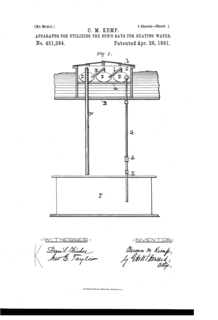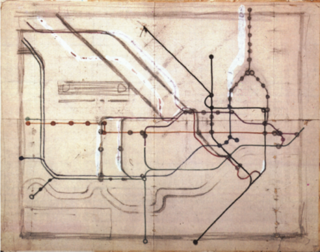
In the late 19th century, having warm water at home required burning coal or wood. However, the idea of making fire during the hot and humid Maryland summer felt unbearable to inventor Clarence M. Kemp.
As a result, he invented a new way to heat water without burning wood or coal. Kemp built a solar water heater, which he patented in 1891 and later commercialized under the name "Climax". The technology spread rapidly in hot areas of the US and within 6 years one third of homes in Pasadena, California, were using the energy of the sun to heat water in their homes.
The patent drawing shows how water is stored in tanks mounted on the roof of the house, instead of passing through a stove. The tanks are covered by a glass panel to reduce heat loss while letting in sun rays.
The Climax was an imperfect, early-stage idea, as the design did not resist winter frosts. However, it did pave the way for innovations in water heaters, leading to the registration of several patents in the early 20th century. The basic design of passive solar water heaters has remained unchanged and is a technology that some newly constructed homes still use to reduce their environmental footprint.




